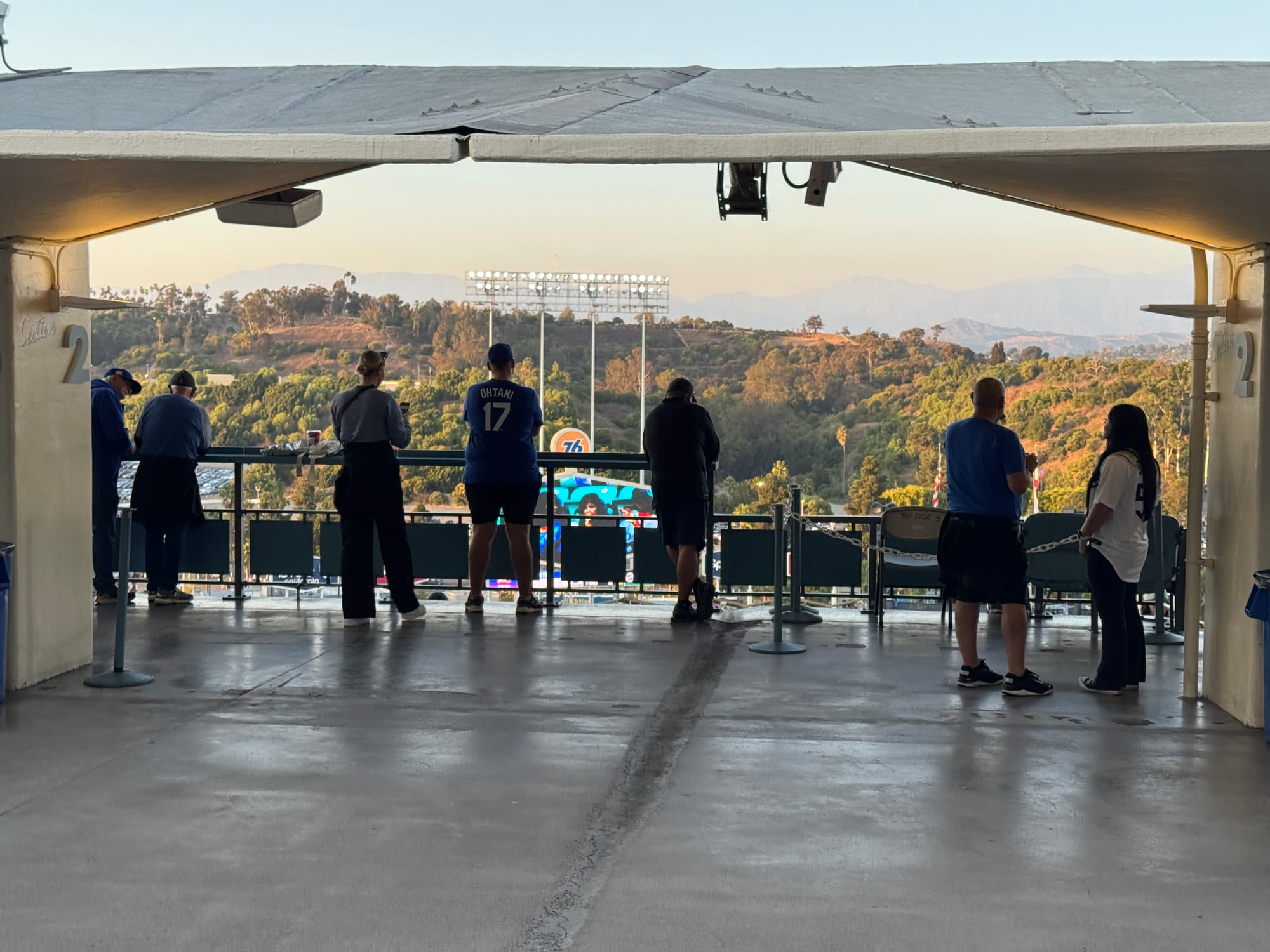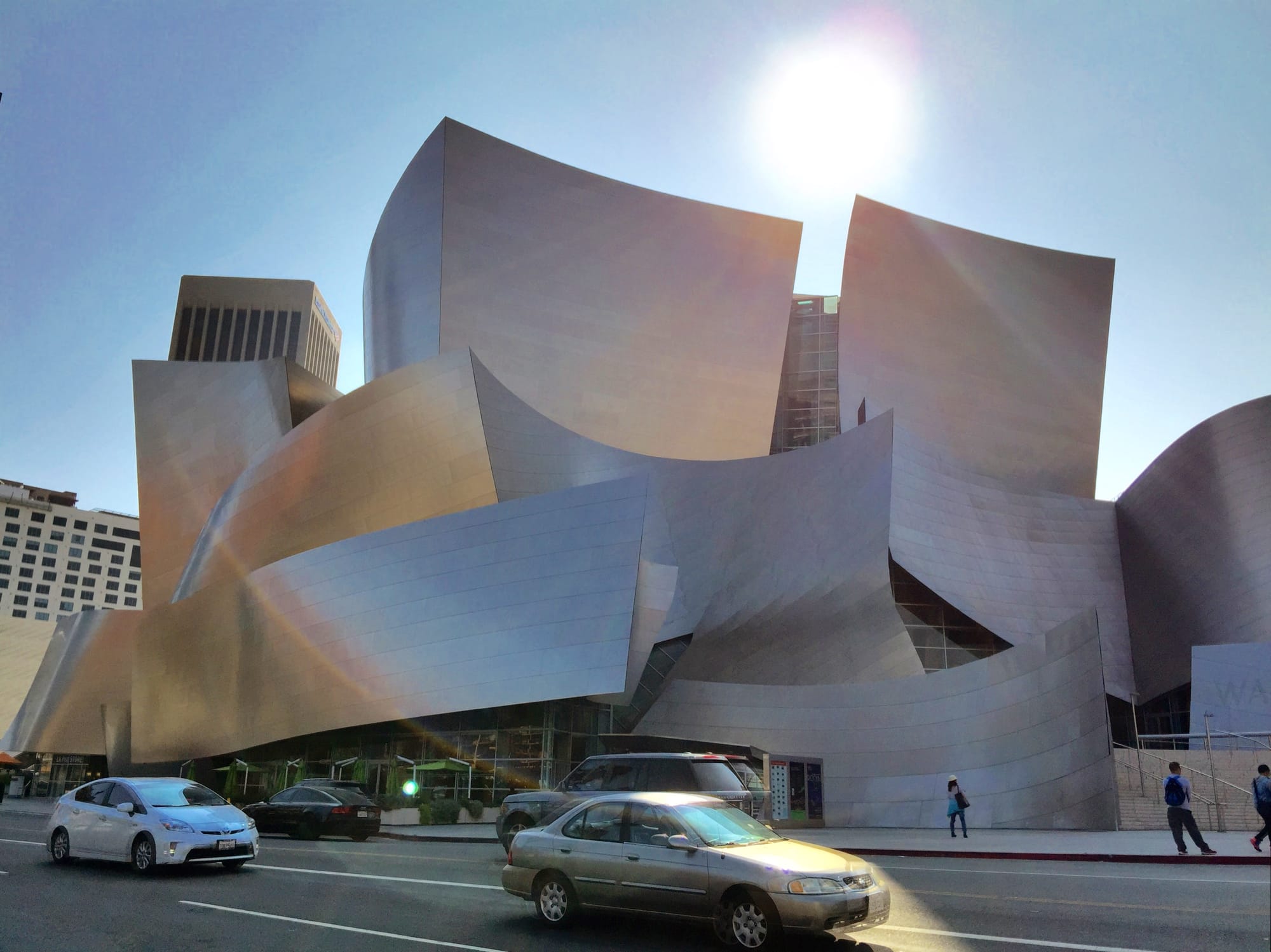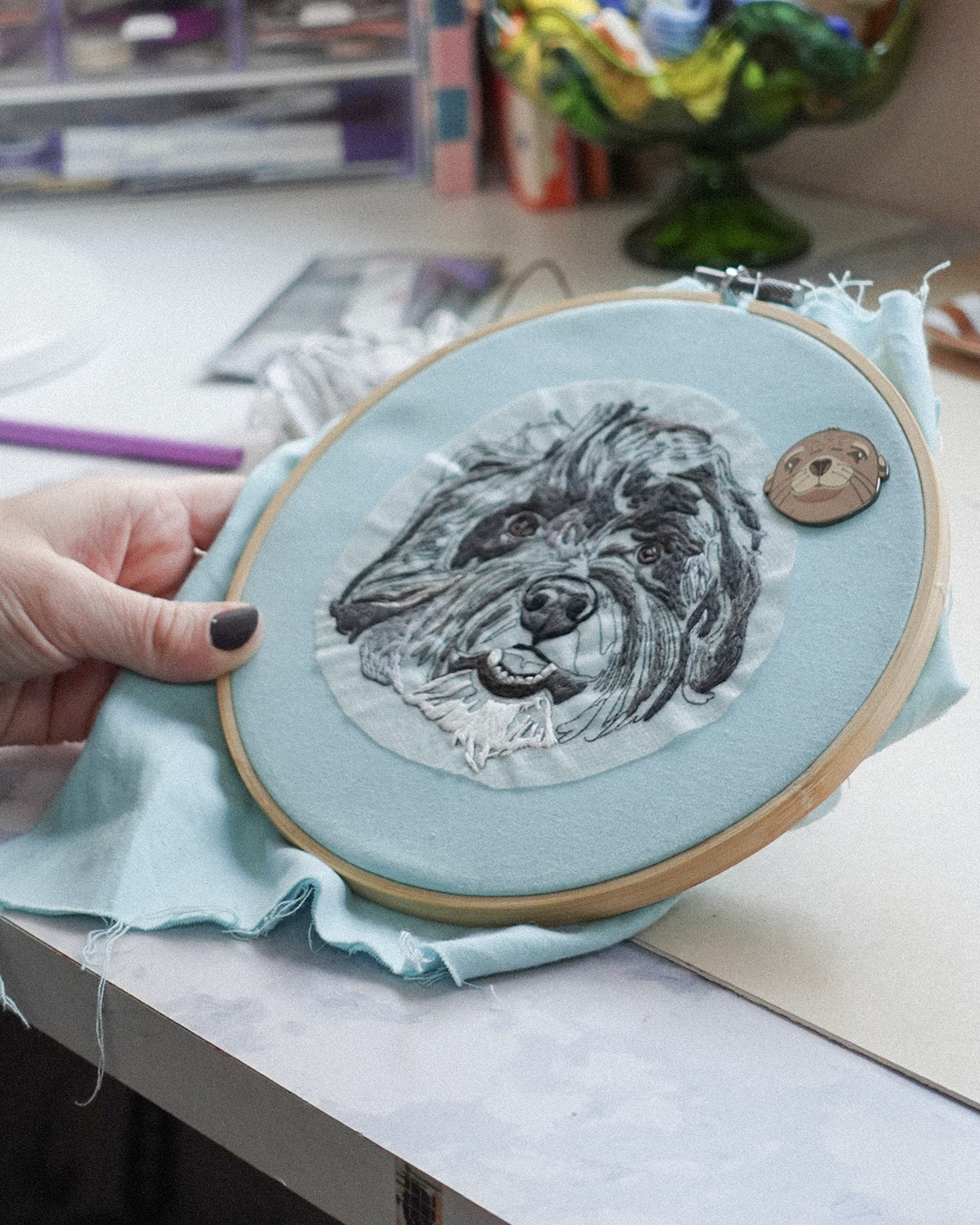










There's a guy I've been following on YouTube for his food reviews in and around LA for the past year or two. He exclusively takes public transit to get from place to place, so I also love the bonus reviews of Metro trains and buses as they continue to grow.
He's like a junior version of Jonathan Gold, going deep into the heart of LA every few weeks to unearth true gems from restaurants that operate out of an alleyway or above a laundromat. He also reviews viral LA eats and I'm always curious to hear what he thinks because you never know if popular things are truly good or just popular for some reason.
Today he uploaded a new video, reviewing street vendors during the NoKings protests over the weekend:
What I love most about this is that by simply turning on a camera as he walks around you see that while there were tens of thousands of people there, everyone was chill, but when he pans the camera towards federal buildings, you see mostly masked US Marines holding guns standing around what clearly looks like a peaceful neighborhood gathering.
The juxtaposition of people standing around with signs against a hostile invading force complete with helicopters circling couldn't be more stark, and really illustrates how unjust and ridiculous the current president's actions are.


Me holding a custom pet portrait, the last one I worked on in 2024!
Do you pick out a word for your year? It’s like a mantra you can repeat throughout the 12 months. For 2025, my word is consistent. I selected it, partly, because I’ve been largely inconsistent with this blog for the past couple of years. It’s not a singular reason; life gets in the way! You know the phrase, “the spirit is willing, but the flesh is a mess”? That’s how it feels a lot of the time.
In an effort to live my word of the year, I am back. For real, this time. (How many times have I said that? Sheesh!) I’ve got an editorial calendar worked up; it’s meager right now, but I plan to grow it once I am more consistent. I’ve got a redesign in the works, which hasn’t happened for at least three or four years.
My book, Threads of Treasure, was published. After two years of planning, ICON12 happened. My pal Melissa and I hosted our third Camp Craftaway—our largest yet. (And it’s only growing!). I created DIY embroidery kits and needle minders and sold them at craft markets.
A core part of my identity is this blog. A podcast episode where I talked to Abby at Craft Industry Alliance made me particularly wistful. I started Brown Paper Bag in the early 2010s (aka my early 20s) when blogging felt magical and the internet was actually fun. (I know I sound like old man yells at cloud, but it’s true!!) Brown Paper Bag has been with me through grad school in Baltimore, through two large moves (to Minneapolis and then Seattle, where I live now), and much more. It’s given me incredible opportunities over the years.
In the walled gardens of big tech and endless scroll newsfeeds, websites are still important. Human curation is important, especially in the age of AI. It’s why it has still gnawed at me for so long to return to this place. Still paying for hosting, still renewing the domain every year.
The plan is to write in Brown Paper Bag once a week, on Wednesdays, for a while, and see how that goes. Then, it’s up from there.
I write in my newsletter, Orts, which you can subscribe to here. It’s published on Fridays. I stopped tweeting in 2016 and officially deactivated my Twitter in November 2024, so now I’m on Bluesky, where I’m @brwnpaperbag.com.
If you’ve made it this far, thanks for reading. I’ll see you here next week.
The post Picking a Word of the Year While Sounding Like an Aging Millennial first appeared on Brown Paper Bag.
“We can disagree and still love each other unless your disagreement is rooted in my oppression and denial of my humanity and right to exist.”
– James Baldwin
“Community is what happens when you do what you love together.”
– Pete Davis
“Always go to the funeral” means that I have to do the right thing when I really, really don’t feel like it. I have to remind myself of it when I could make some small gesture, but I don’t really have to and I definitely don’t want to. I’m talking about those things that represent only inconvenience to me, but the world to the other guy. You know, the painfully under-attended birthday party. The hospital visit during happy hour. The Shiva call for one of my ex’s uncles. In my humdrum life, the daily battle hasn’t been good versus evil. It’s hardly so epic. Most days, my real battle is doing good versus doing nothing.”
A beautiful read: Always Go To The Funeral, by Deirdre Sullivan